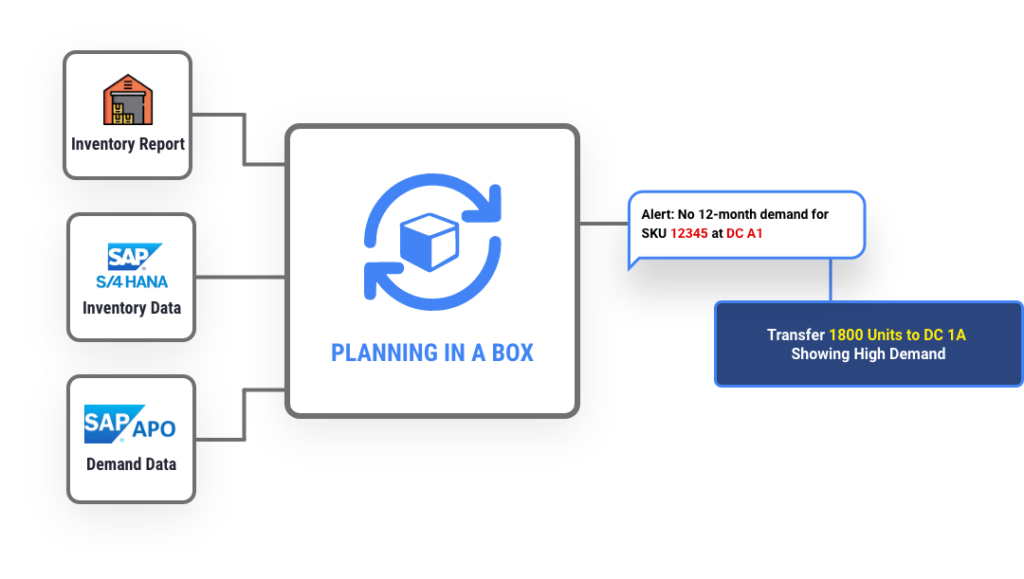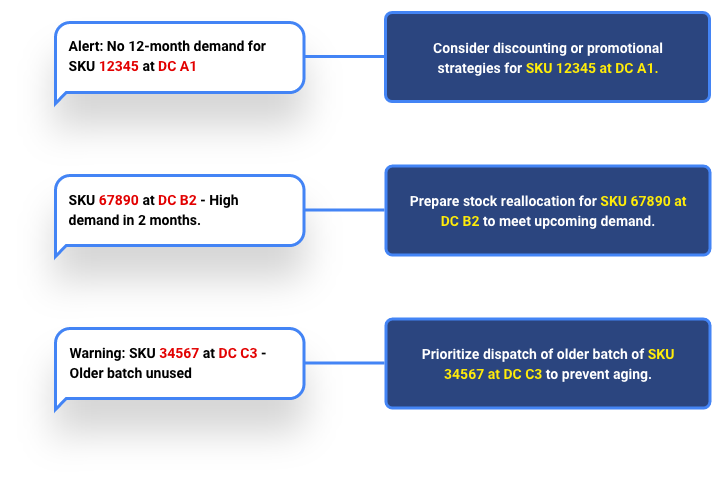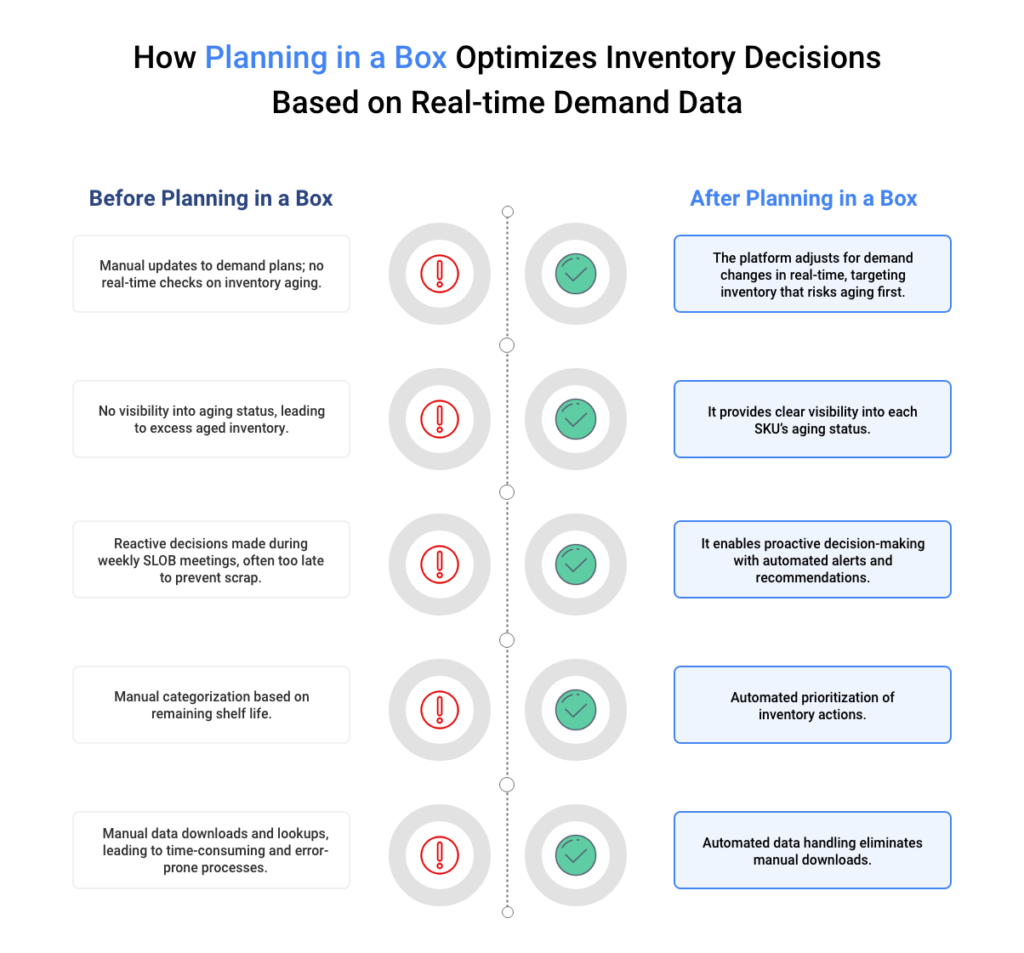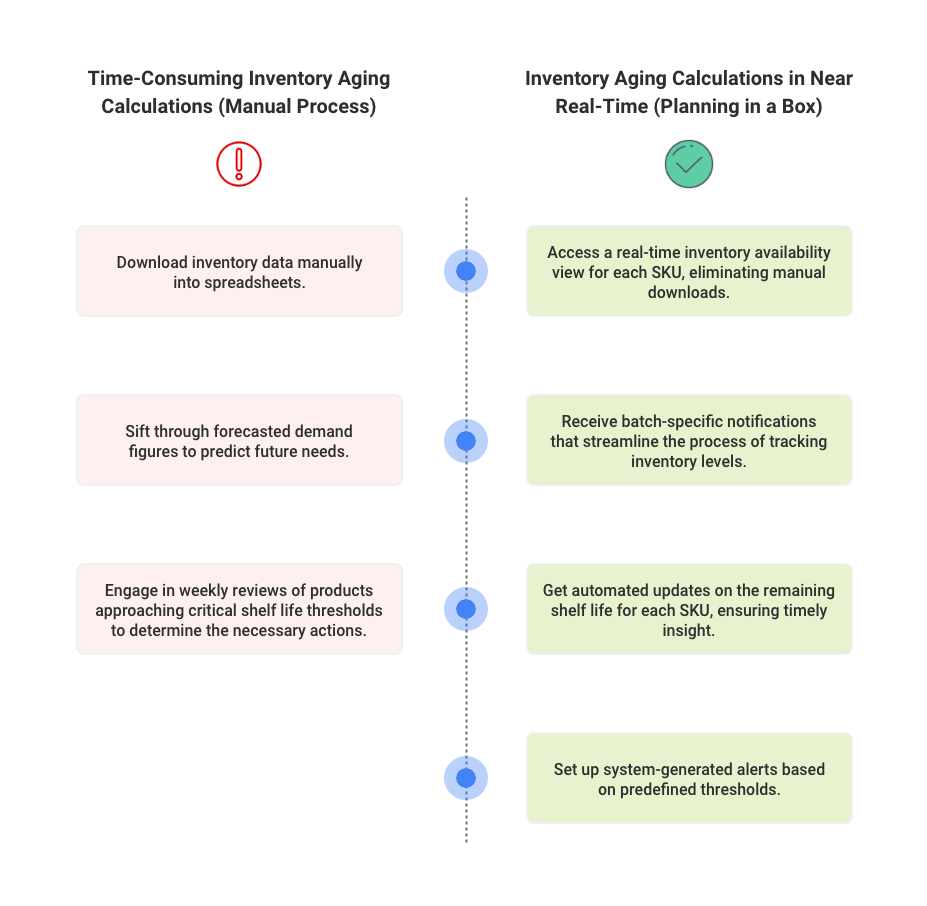
Transform Your Supply Chain Planning and Marketing Strategies with Google Cloud and SAP Integration

Transform Your Supply Chain Planning and Marketing Strategies with Google Cloud and SAP Integration
February 1, 2024 | Asheesh Gupta
Blog / How a Global CPG Giant Turned Inventory Aging Into a Revenue Stream
Why do companies end up with more inventory than they need? It’s usually because they don’t have a clear picture of what’s in their stock. Imagine this in your current context: the shelves are full, but can you tell at a glance which items are just gathering dust and which are close to expiring?
Without this insight available at your fingertips, making effective decisions is tough. You can’t decide which items to promote, which to discount, or which to relocate before they turn into a loss.
McKinsey highlights common but flawed strategies companies use to tackle excess inventory. One approach is a blanket reduction across all products, risking lost sales of in-demand items. Another is dumping lists of surplus stock on sales teams without considering their specific market focus, leading to two unproductive outcomes: salespeople either overlook these lists for more lucrative deals or hastily offload stock at low value, recovering just a fraction of its worth. Both tactics fail to address the root issue effectively, leaving companies with either ongoing stockpile or significant revenue loss.
The subject of our case study is a global Consumer Packaged Goods (CPG) company renowned for its extensive range of products. With a vast distribution network that includes multiple customer-facing distribution centers (DCs), the company handles the shipment of over a million cases each month. The products vary in shelf life, ranging from 18 to 36 months.
The company faced significant challenges in inventory management, primarily due to:
1. Inventory Visibility through Data Integration

We created a comprehensive data foundation by integrating data from SAP APO, S4 HANA, and other sources into the Google Cloud Cortex framework. On top of that, we deployed our decision intelligence platform, Planning in a Box. This platform allowed for detailed drill-downs by category, subcategory, DC, SKU, batch, and quantity by storage location, providing a granular view of inventory status.
2. Enabling Aging Inventory Alerts for Decision Making
We identified key areas that were time-consuming when done manually and automated them through alerts. These alerts covered various scenarios, such as:
Recommendations were auto-generated for actions like DC split, selling off or scrapping specific SKUs (e.g., moving a certain quantity of a SKU to a different DC).

3. Data Visualization
To ensure user adoption and ease of use, especially for planners accustomed to traditional spreadsheet tools, a user-friendly interface was crucial. We developed a dashboard that mirrored spreadsheet functionalities, allowing planners to interact with the data in a familiar format.
4. Aging Inventory Projections
Anticipating future inventory challenges was essential for long-term inventory health and optimization. With Planning in a Box, we were able to provide 12-month projections for aging inventory risks using current inventory and demand data. This foresight enabled the company to take preemptive measures to avoid potential aging issues.

Transitioning from manual, reactive operations to a streamlined, proactive system, the outcomes have been significant and measurable. Below is a comparative overview that clearly outlines the improvements across various aspects of inventory management

Inventory aging calculations are complex and time-consuming, often involving multiple manual checks and coordination between different departments. Planning in a Box streamlines this process, providing real-time data that helps companies act quickly and efficiently. To give you a high-level view of the efficiency gains and risk reduction you can achieve with Planning in a Box, here’s a comparative snapshot:

Inventory aging remains a significant, often silent challenge that steadily drains profits. To address this, getting a grip on your existing enterprise data is essential. Google Cloud steps in as a powerful ally in this arena, especially with its Cortex Framework.
This framework enables rapid and secure data movement to BigQuery, ensuring essential security checks are maintained. When coupled with a decision intelligence platform like Planning in a Box, which integrates seamlessly with existing ERPs, these cloud tools unlock scalable and efficient solutions for inventory management challenges.
If you’re looking to leverage innovative AI solutions to navigate complex supply chain issues, I invite you to get in touch with me for a personalized workshop. Together, we can explore tailor-made strategies to optimize your supply chain operations.
ABOUT THE AUTHOR